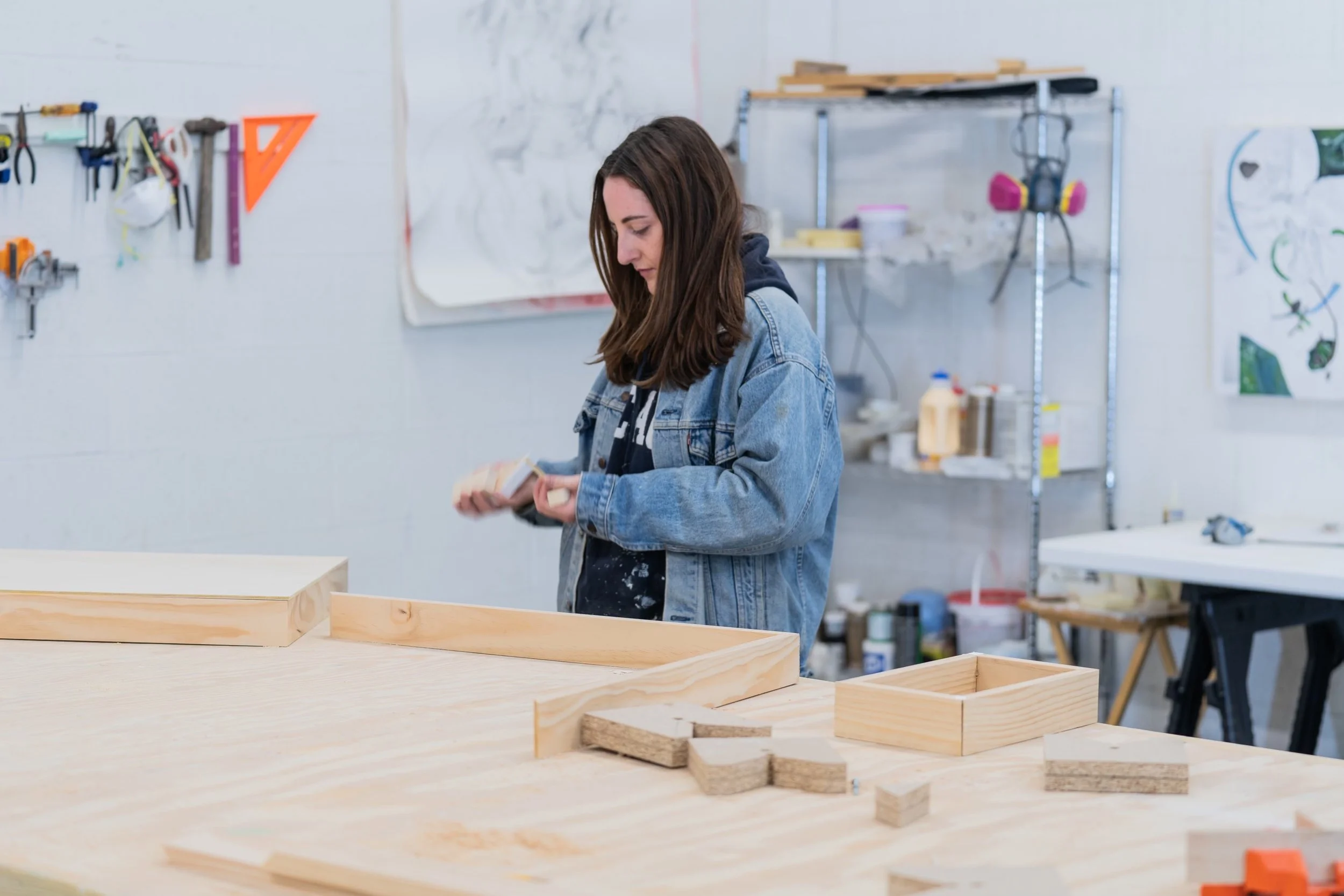Statement
“I paint multi-layered landscapes that challenge linear time and that break up traditional pictorial space. The resultant interplay among the hidden and visible mimics destruction of the natural world. Preliminary image research includes public media documentation of natural disasters, photographs of Kentucky wilderness, and the cultivated garden. This body of work also references Hudson River School, Impressionist, and Futurist paintings. Each work begins with a sketched amalgamation of these sources in a silica-based acrylic, which I formulate in the studio by combining binders, additives, and pigment dispersions. Modifications in the medium’s composition alter cure times. Often, the surface of the paint dries within hours, enabling the addition of up to three overlays in a single studio session. This process of accrual also allows for a spectrum of opacities. Transparent mixtures permit some preceding information to remain and therefore indicate a departure, a movement across time from one phase to the next. Other formulas cover completely, opaque and impassable. The works consist of anywhere between six and fifteen coatings. Between each, I adhere a temporary veneer, preserving past versions of the image to be revealed alongside their later completed counterparts. Minimal addition of a thickening agent to the binders produces a highpoint where the paint meets the edge of a mask, leaving behind a kind of seam once the tape is removed. Fragments of the past stitch themselves to those of the present, creating a temporal topography. In some paintings, physical cutouts further challenge spacial illusions by exposing a second panel mounted beneath. Instead of a demonstration of space, the picture plane frames passages of time as it "forgets" the concealed and "remembers" the exposed. This renegotiation establishes a hierarchy, or contest, within the composition. These objects become chaotic and broken. Situated along a suspension between what remains and what might be, my paintings reflect how the climate crisis alters the planet more quickly than ever before.”
Bio
Kentucky based artist Sara Olshansky holds two degrees from the University of Louisville: a BFA in 2D Studios, a BA in Art History with a focus on the ethics of image literacy, and a minor in Spanish Language. Olshansky participated in a semester long transfer program at La Universitat Autònoma de Barcelona. She has received grants furnished by the Great Meadows Foundation, The Community Foundation of Louisville, Louisville Visual Art, and the University of Louisville. She is represented in public collections, such as Berea College and 21c Museum. In addition to her studio practice, Olshansky freelances as a writer and preparator. She manages, maintains, and restores a collection of outdoor installations in Crestwood, KY. Outside the studio, Olshansky gardens and focuses on reintroducing native species in urban areas, implementing small-scale food growth for households, and removing invasives via biodynamic methods. Her experience of Kentucky’s ecology in these settings informs the painting process, as she reflects on acts of placemaking in relation to the natural world.
